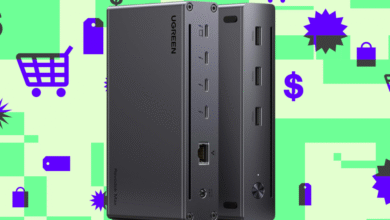How Low-Latency Origin Services Actually Work

▼ Summary
– Origin servers are the authoritative source in streaming workflows that serve video segments and manifests to players, directly impacting latency, stability, and scalability for millions of viewers.
– Live streaming requires strong read-after-update consistency to prevent players from fetching stale manifests, which would cause playback delays and viewers to miss live moments.
– A multi-tiered storage approach addresses live streaming needs by using a high-performance Tier 1 for active segments and a cost-effective Tier 2 for archival, optimizing for small object sizes and time-sensitive access.
– Durability is ensured through data replication across multiple availability zones, protecting against failures and ensuring uninterrupted playback by maintaining accessible copies of segments.
– Strong consistency is maintained by versioning objects in metadata, and performance is enhanced with in-memory storage in Tier 1, while cost efficiency is achieved by scaling resources and moving older segments to Tier 2.
We’ve all experienced that moment—you tune into a live stream for a major sports event or breaking news, only to watch a loading icon spin while friends elsewhere are already reacting to the action. Even a few seconds of delay can make you feel like you’re lagging behind, disconnected from the live experience everyone else is enjoying.
Central to any streaming setup is the origin server, the system that accepts encoded video segments and playlist files from the encoder and delivers them to the distribution network. Acting as the definitive source for the stream, the origin ensures every request from a video player—whether for the newest HLS segment or an updated manifest—is handled accurately and swiftly. Its efficiency directly influences startup latency, playback reliability, and the stream’s ability to scale to millions of simultaneous viewers.
In HTTP Live Streaming (HLS), live broadcasts generally use a unique manifest path, offering players a consistent URL and simplifying how they access the stream. The encoder regularly creates and uploads fresh manifests, replacing older versions with updated segment listings as the broadcast continues. Video players fetch the manifest repeatedly, interpret the latest segment references, and request those segments for playback—creating the illusion of watching live video in near real time.
Traditional object storage systems, however, aren’t built for this kind of access pattern. Every time the manifest updates, it must become available to players immediately—a feature known as strong read-after-update consistency—so viewers always see the most recent segments. Without it, players might retrieve outdated manifests, causing noticeable delays or causing them to miss live moments entirely. Reads from the origin must also happen with extremely low latency, since every request for a manifest or segment directly impacts startup speed and smooth playback; slow reads lead to buffering or falling behind the live edge. Additionally, the system must offer high durability, ensuring that once a segment is written, it remains reliably stored and accessible. Poor durability can result in dropped segments or playback failures, interrupting the stream and eroding viewer confidence.
These issues can be resolved by an Origin service that uses a multi-tiered storage strategy, tailored to the specific access patterns of live video. Unlike conventional object storage, which handles large files, live streaming involves small segments—for example, roughly 15 MB for a 20 Mbps 4K stream—that perform better when the system is optimized for small object sizes. What’s more, each segment is only relevant for a short period, as players continually advance to newer parts of the stream. In reality, over 95% of read requests focus on a small, active group of segments, letting the origin concentrate performance and consistency where it’s needed most.
The Origin service can be organized around several essential components that collaborate to meet the demands of live streaming. At the front is the interface layer, linking both to the live encoder publishing new manifests and segments and to the players retrieving them for playback. Behind this sits an object metadata service, which tracks the location and version details for every object in the system. Storage is split into two tiers: Tier 1 is a low-latency, high-performance layer, often based on in-memory systems like Memcached or Redis, while Tier 2 is a disk-based layer designed for cost-effective archival. Objects are first ingested into Tier 1, and after a short interval—once the stream has moved forward—they transition to Tier 2 for longer-term storage.
Durability is guaranteed by replicating ingested data into multiple copies throughout the Origin service. These replicas are usually spread across different availability zones, boosting fault tolerance and resilience against hardware or network issues. By keeping several independent copies, the system ensures that even if a storage node or an entire zone fails, the data stays available.
For viewers, this means continuous playback and fewer errors caused by missing or damaged segments.
Strong consistency is preserved by generating new versions of objects rather than overwriting old ones. Each version is tracked and managed within the object metadata, making sure players always get the latest valid manifest or segment. This approach removes the risk of players reading stale data—such as an obsolete manifest that doesn’t point to the newest segments—which could otherwise cause playback delays or users dropping behind the live edge.
Performance at the live edge is powered by using in-memory storage for newly written objects. Storing these segments in Tier 1 storage cuts read latency dramatically, letting players retrieve content quickly and enjoy smooth, buffer-free playback. Replicating objects across multiple hosts further boosts performance by spreading out read requests, avoiding hotspots, and ensuring that large numbers of simultaneous viewers can be served without bottlenecks.
Cost efficiency comes from aligning storage tiers with the natural lifecycle of live streaming content. Segments no longer at the live edge are automatically shifted to Tier 2 disk-based storage, which offers affordable archiving without losing availability. Also, because live events are often scheduled and predictable, Tier 1 resources can be scaled up to manage peak demand during broadcasts and scaled back afterward. This elasticity helps reduce the cost of maintaining high-performance storage without sacrificing the quality of the viewing experience.
(Source: Streaming Media)





